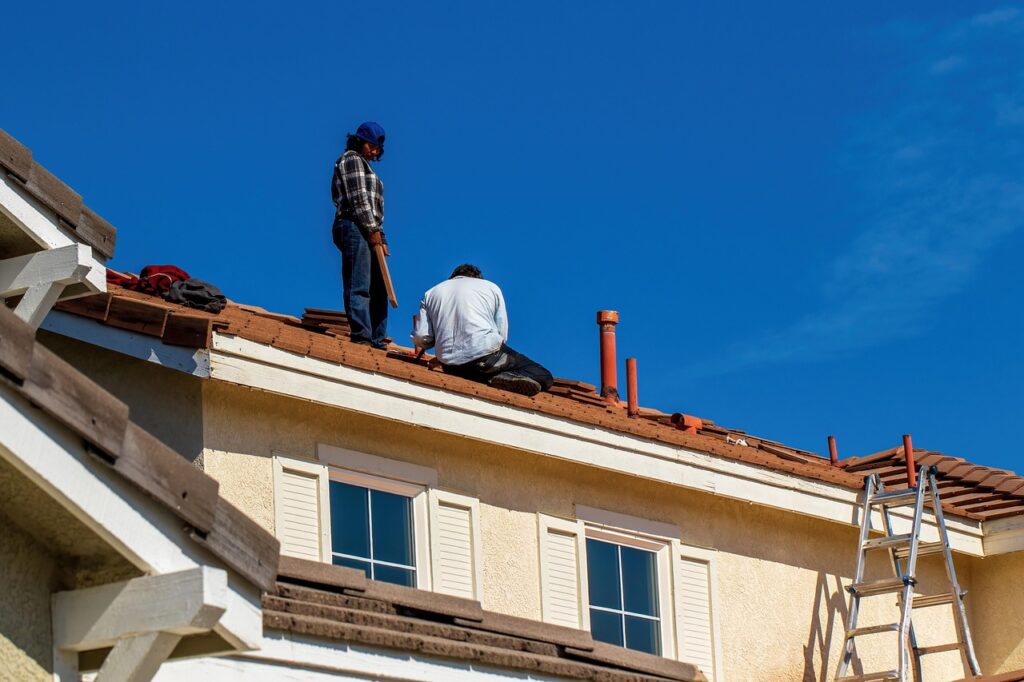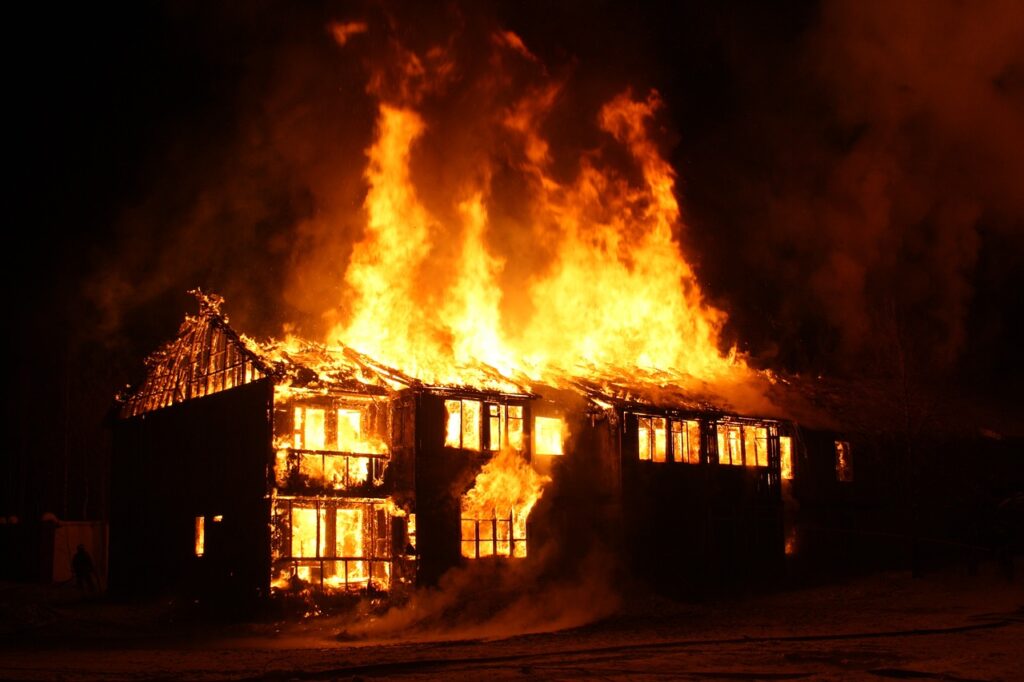Introduction
Growing up in Los Angeles, I was surrounded by the beauty of the Pacific Palisades, Will Rogers State Park, and the San Gabriel Mountains. These places defined the city’s connection to nature and provided a peaceful retreat from urban life. Seeing the January 2025 wildfires devastate so many of these areas reinforced how important it is to fireproof your community to protect the homes and landscapes that shape our lives.
The fires destroyed over 12,000 structures, claimed at least 28 lives, and scorched 40,000 acres of land. Entire neighborhoods were reduced to ash, leaving thousands displaced. Many of my friends lost everything in a single night. The destruction extended beyond homes—natural areas, wildlife habitats, and beloved landmarks were reduced to charred remnants.
The 2025 Los Angeles wildfires reflect a troubling trend. Wildland fires are growing more severe due to climate change, high temperatures, and expanding wildland-urban interfaces. As urban areas sprawl into fire-prone areas, the risks to homes and communities increase. These fires have long-term consequences for ecosystems, air and water quality, and public health.
While this post isn’t strictly about biology, it’s impossible to ignore the ecological implications of fires. They disrupt ecosystems, pollute air and water, and alter landscapes for generations. Fireproofing your community is essential for the prevention and mitigation of these disasters, thereby ensuring safety for both people and the environment.
This Bleeding Edge Biology post outlines the top 16 ways to fireproof your community, offering actionable strategies to reduce risks, protect ecosystems, and strengthen resilience. By implementing these steps, we can work together to create safer, more prepared neighborhoods and preserve the places we love.
1. Create Defensible Space Around Homes and Shared Spaces
One of the most effective ways to fireproof your community is by establishing defensible space.
- Clear flammable materials like pine needles, dry leaves, and overgrown vegetation within 30 feet of buildings.
- For community parks, ensure open spaces are landscaped with noncombustible materials and free of plant debris.
- Maintain a buffer zone of 100 feet in high-risk areas to prevent the spread of fire.
2. Maintain Firebreaks in Open Spaces
Firebreaks are essential for containing wildfires in wildland-urban interfaces.
- Collaborate with local authorities to establish and maintain cleared zones in parks, trails, and other open areas.
- These firebreaks serve as a first line of defense against wildfires spreading into populated areas.
3. Promote Fire-Resistant Landscaping Across the Community
Encourage the use of fire-resistant plants like succulents and native, drought-tolerant vegetation in shared and private spaces.
- Replace wood mulch in flower beds near homes with gravel or stone.
- Use noncombustible materials in community gardens and playgrounds to minimize fire risks.
4. Implement Strict Building Codes for Fire-Prone Areas
Enforcing fire-resistant construction standards ensures homes and buildings are better equipped to withstand wildland fires and high temperatures.
- Require fire-resistant materials for exterior walls, such as stucco, fiber cement, or metal siding (steel or aluminum). These materials are noncombustible and provide a Class A fire rating when installed correctly.
- Ensure all new homes comply with regulations set by agencies like the State Fire Marshal and the California Building Code.
5. Install Ember-Resistant Vents and Gutter Covers
Wind-blown embers are a leading cause of fires igniting homes. Blocking their entry from buildings is essential to fireproof your community.
- Fit all structures with ember-resistant vents featuring 1/8-inch metal mesh to block embers from entering attics and crawl spaces.
- Add noncombustible gutter covers to prevent the accumulation of pine needles and other debris in rain gutters.
6. Regular Maintenance of Open Spaces and Properties
Routine maintenance is a cornerstone of efforts to fireproof your community.
- Remove dry leaves, dead branches, and plant debris from parks, hiking trails, and residential yards.
- Ensure tree branches are trimmed at least 10 feet away from rooftops and large windows to reduce exposure to radiant heat.
7. Retrofit Older Homes with Fire-Resistant Materials

Retrofitting older homes that lack adequate wildfire protection is another important way to fireproof your community.
- Replace combustible siding and wood siding with fire-resistant materials such as metal, stucco or fiber cement.
- Upgrade roofs to shingle roofs rated for fire resistance or opt for metal roofs.
8. Remove Fuel Sources Near Shared Spaces
Reducing fuel sources is key to fireproofing your community.
- Lower wildfire risks by removing propane tanks, dead plants, and flammable outdoor decorations from parks, playgrounds, and private yards.
- Establish safe zones in public areas, free from flammable materials, where residents can gather during emergencies.
9. Advocate for Fire-Safe Public Infrastructure
Fireproof your community by ensuring, schools, and libraries and community centers are equipped with fireproof features:
- Install sprinkler systems, fire extinguishers, and fireproof safes in these spaces.
- Upgrade public buildings with ember-resistant zones and fire retardant treatments.
10. Organize Community Wildfire Drills
Fireproof your community through the development and practice of action plans that include evacuation routes, communication systems, and designated safe zones.
- Work with your local fire department to ensure every resident knows how to respond during wildfire season.
11. Encourage Fire-Resistant Outdoor Features
In parks and shared spaces, prioritize noncombustible materials for benches, playground equipment, and fencing.
- Replace wooden fences near buildings with options made of metal or masonry to reduce fire risks.
12. Install and Maintain Community Water Resources
Ensure your community has accessible water supplies for fire suppression.
- Install shared water tanks, fire hydrants, and portable sprinkler systems to fireproof your community.
- Equip parks and public areas with portable sprinkler systems that can act as an additional line of defense.
13. Collaborate on Forest Management Practices
Fireproof your community by supporting best practices for managing open spaces and surrounding forests.
- Advocate for controlled burns and thinning of overgrown vegetation in nearby wildland fire zones to reduce the buildup of fuel sources.
14. Educate Residents on Fire Prevention

Educating residents is key to efforts to fireproof your community. Work with the National Interagency Fire Center or your local fire department to host workshops on fire prevention.
- Topics should include the importance of defensible space, the risks of wind-blown embers, and proactive steps to reduce wildfire risks in both private and public spaces.
15. Invest in Fire-Safe New Construction Projects
Fireproof your community by ensuring all new construction uses fire-resistant materials and adheres to the latest building codes for fire-prone areas.
- Use double-pane glass windows to withstand radiant heat and protect against breakage.
- Require noncombustible materials for roofs, siding, and eaves.
16. Advocate for State and Local Support
Work with government agencies to ensure adequate funding and resources for fire prevention.
- Push for grants and funding that support efforts to fireproof your community.
- Work with state agencies to develop initiatives for wildfire prevention and recovery.
By implementing these 16 ways to fireproof your community, we can reduce wildfire risks, protect ecosystems, and create safer neighborhoods. Collective action today ensures a more resilient future for both our communities and the natural landscapes we cherish.
Your Thoughts
How have you been impacted by wildfires? What strategies have you or your neighbors used to fireproof your community and reduce wildfire risks? Are there specific challenges you’ve faced when implementing fireproofing measures? We’d love to hear your thoughts, experiences, and suggestions. Share your ideas in the comments below.
Additional Materials
Ted Talks/Videos
TED Talk: Why Wildfires Have Gotten Worse — and What We Can Do About It
Forest ecologist Paul Hessburg discusses the rise of megafires and offers insights into restoring natural fire balance.
TED Talk: “A Surprising Solution to Our Wildfire Problem — More Fire”
Fire ecologist Camille Stevens-Rumann explains the benefits of reintroducing controlled burns to prevent catastrophic wildfires.
TED Talk: “The Growing Megafire Crisis — and How to Contain It”
George T. Whitesides explores innovative technologies and strategies to combat the increasing frequency of megafires.
TED-Ed Lesson: “Why Certain Wildfires Are Necessary”
This animated lesson outlines the ecological benefits of wildfires and their role in maintaining healthy ecosystems.
National Interagency Fire Center: Wildfire Prevention Videos
A collection of educational videos designed to inform viewers about wildfire prevention and mitigation strategies.
Home Fire Protection
CAL FIRE: Wildfire Home Hardening Guide
This guide offers detailed instructions on strengthening your home’s defenses against wildfires, including recommendations on roofing materials, vent protection, and creating defensible space.
National Interagency Fire Center: Prepare and Protect Your Home
This resource provides strategies for using fire-resistant building materials and maintaining your property to reduce wildfire risks.
Federal Emergency Management Agency (FEMA): Protect Your Property from Wildfire
FEMA’s guide outlines steps to safeguard your home, including creating defensible space, using fire-resistant landscaping, and preparing an emergency water supply.
·Habitat for Humanity of Greater Los Angeles: 6 Tips to Fireproof Your Home
This article provides practical advice on fire-smart landscaping, roof maintenance, and installing ember-resistant vents to enhance your home’s fire resistance.
Mercury Insurance: How to Fireproof Your Home from Wildfires
This resource offers tips on clearing flammable vegetation, maintaining defensible space, and other measures to protect your home during wildfire season.
Wildfire Education/Prevention
National Fire Protection Agency: Wildfire Division
The NFPA Wildfire Division provides resources to residents and safety professionals to help ensure everyone living in communities at risk has the information, knowledge, and tools to prepare and protect their homes from the threat of wildfire.
U.S. Forest Service: Wildland Fire Management
The U.S. Forest Service offers information on current fire conditions, prevention strategies, and the role of fire in maintaining healthy ecosystems.
Smokey Bear: About Wildfires
The iconic Smokey Bear campaign offers educational materials aimed at understanding wildfires.
California Natural Resources Agency:
Community Wildfire Prevention and Mitigation Report This report outlines priority projects and strategies to reduce wildfire risks across California, including hazardous fuel reduction and community defensible spaces.
U.S. Fire Administration: Wildfire Outreach Materials
A collection of resources to educate communities on preparing for living close to nature and becoming safer from wildland-urban interface fires.
National Interagency Fire Center: Wildfire Prevention
Offers online resources to learn about wildfire prevention in various states and areas, including tips on safe outdoor equipment use and debris burning.



As an Australian, this article really resonates. We face bush fires (as we call them) all the time – they are raging in places in Australia right now, as it is high summer. Very, very good advice about what can and should be done.
Thank you so much for your comment, Margaret! Australia’s bushfires are a stark reminder of how destructive and unpredictable wildfires can be, especially with rising global temperatures and longer fire seasons. I truly appreciate your perspective, and I hope that some of these fireproofing strategies can be useful in both urban areas and the wildland-urban interface where fire risk is highest.
Stay safe this fire season, and if you have any best practices from Australia that have been effective in bushfire prevention, I’d love to hear them!